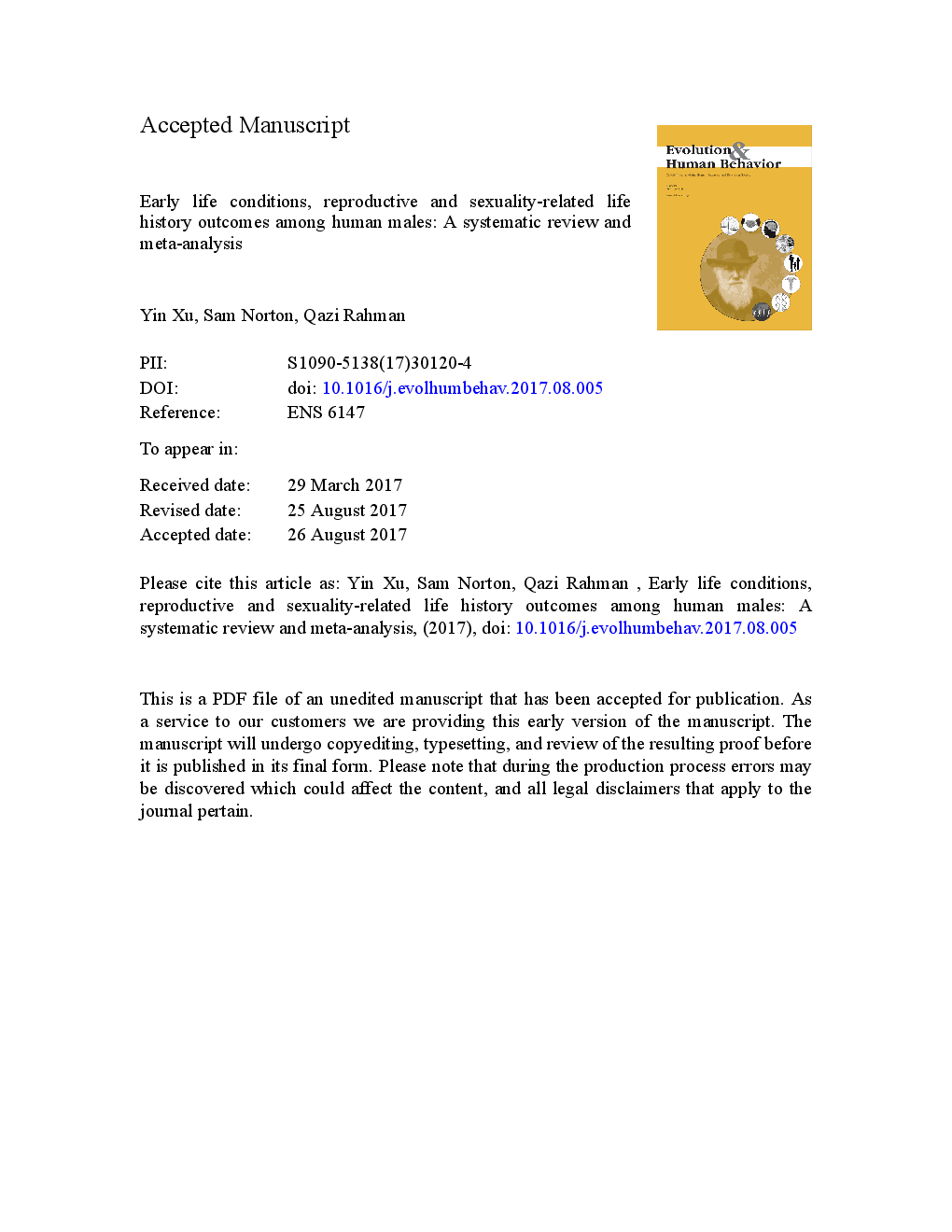ترجمه فارسی عنوان مقاله
شرایط زندگی زودهنگام، نتایج تحقیقات تاریخ زندگی مرتبط با تولید مثل و جنسیت در میان مردان انسانی: بررسی منظم و متاآنالیز
عنوان انگلیسی
Early life conditions, reproductive and sexuality-related life history outcomes among human males: A systematic review and meta-analysis
| کد مقاله | سال انتشار | تعداد صفحات مقاله انگلیسی |
|---|---|---|
| 138984 | 2018 | 44 صفحه PDF |
منبع

Publisher : Elsevier - Science Direct (الزویر - ساینس دایرکت)
Journal : Evolution and Human Behavior, Volume 39, Issue 1, January 2018, Pages 40-51
ترجمه کلمات کلیدی
شرایط زندگی اولیه، تئوری تاریخ زندگی استراتژی تاریخ زندگی، متاآنالیز، جهت گیری جنسی، مردان،
کلمات کلیدی انگلیسی
Early life conditions; Life history theory; Life history strategy; Meta-analysis; Sexual orientation; Men;

